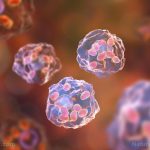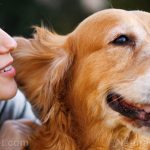
Natural products found to be effective against leishmaniasis in dogs
Wednesday, October 24, 2018 by Edsel Cook
http://www.naturalnewspets.com/2018-10-24-natural-products-against-leishmaniasis-in-dogs.html

A comprehensive review of potential treatments for canine leishmaniasis identified five therapeutic compounds from natural sources. Hesperidin, horse chestnut extract, quercetin, selenium, and vitamin C are all considered to be potentially effective treatments for the infectious disease.
The review was conducted by the University of Pisa. It came out in the American Journal of Animal and Veterinary Sciences.
- Hesperidin is a very common flavonoid in citrus fruits, such as lemons and oranges. It is known for its ability to block infection and replication of plant and animal microorganisms.
- The seeds of the horse chestnut (Aesculus hippocastanum) contain a saponin that can kill Leishmania infantum amastigotes. It also possesses strong antioxidant activity, a trait that is shared with the other candidates.
- Quercetin is a flavonoid extracted from buckwheat (Fagopyrum esculentum). High levels of the natural antioxidant kill Leishmania donovani and Leishmania amazonensis in their amastigote stages.
- The element selenium is a micronutrient that performs many functions. Selenium ions not only halt the growth of cancer cells and viruses, but they also strengthen the immune system against various pathogenic bacterias and viruses.
- Vitamin C does not directly attack Leishmania parasites, but it prevents oxidative damage connected with leishmaniasis. It is often given alongside quercetin and hesperidin to improve the effectiveness of the flavonoids.
Based on the initial findings, the review concludes that these natural products have potential as supplementary treatments for dogs with leishmaniasis. It recommends further analysis to determine the full extent of their viability.
You can get the PDF of the full review at this link.
To find out more about natural treatments for leishmaniasis in dogs, visit PetHealthDaily.com.
Journal Reference:
Virginia DV, Owen H, Poapolathep A, Mario G. NATURAL SUBSTANCES AS NEW POTENTIAL STRATEGIES FOR THE TREATMENT OF LEISHMANIOSIS IN DOGS. American Journal of Animal and Veterinary Sciences. 2017;12(3):169–175. DOI: 10.3844/ajavsp.2017.169.175
Tagged Under: Tags: antioxidants, dogs, Hesperidin, horse chestnut, Leishmania infantum, leishmaniasis, natural pet health, nutrients, pet health, plant remedies, quercetin, selenium, vitamin C





